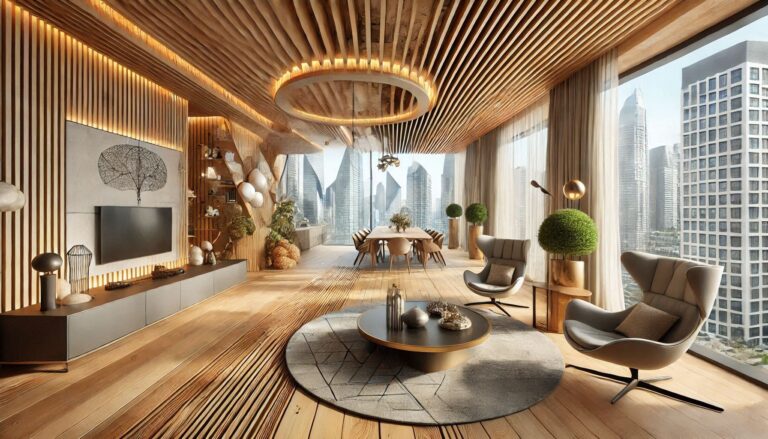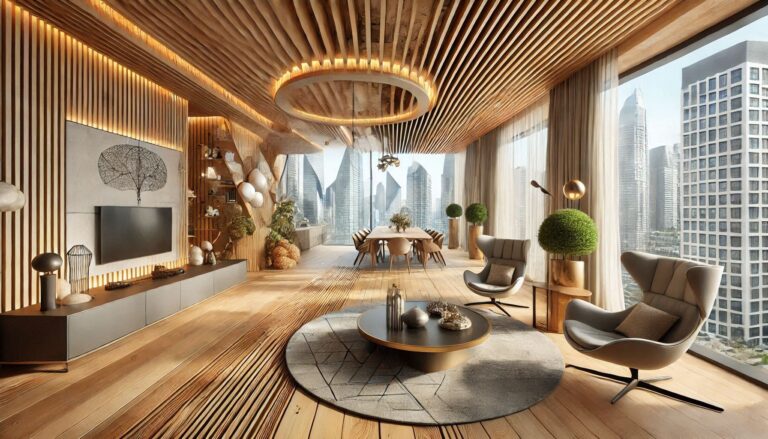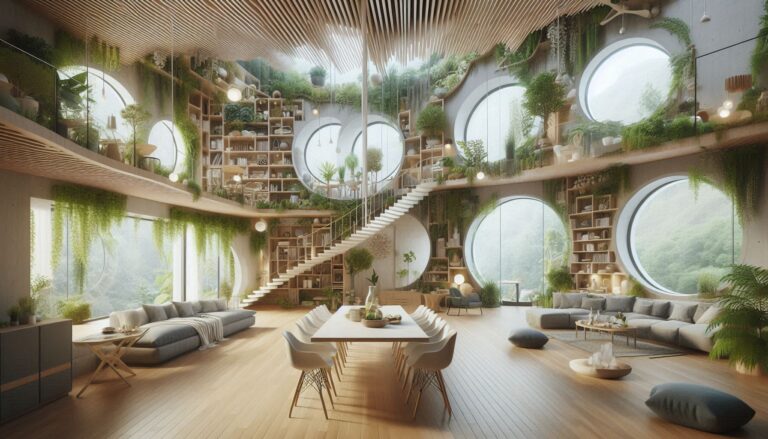Exploring the Rise of Micro-Living and Its Influence on Interior Design Trends

Micro-living is a growing trend in urban areas, driven by the need for affordable housing and more efficient use of space. As the world becomes more densely populated and housing prices continue to rise, micro-apartments and compact living spaces are becoming more common. Here’s a closer look at the rise of micro-living and its influence on interior design trends:
1. Space Optimization: Designing for Functionality
One of the biggest challenges in micro-living is maximizing the use of limited space. Interior designers are responding with innovative design solutions that make the most of every square inch. Multi-functional furniture, such as fold-out beds, expandable tables, and hidden storage, is key to making small spaces feel larger and more livable. Designers are also using vertical space creatively, with shelves, cabinets, and storage units that extend to the ceiling.
Compact kitchens and bathrooms are becoming more efficient, with appliances designed specifically for small spaces. Space-saving solutions, such as modular furniture and built-in fixtures, ensure that every element in the home serves a purpose while maintaining a sleek and organized aesthetic.
2. Minimalist Design: Embracing Simplicity
Minimalism is a natural fit for micro-living, as it emphasizes clean lines, simple forms, and uncluttered spaces. The focus is on essential items, with each piece carefully chosen for its functionality and aesthetic appeal. Neutral color palettes, light finishes, and streamlined furniture help create a sense of openness in small spaces.
The minimalist approach also encourages designers to be selective about the décor and accessories they use. Instead of overcrowding a room with decorative items, designers are opting for a few key pieces that add personality without overwhelming the space.
3. Smart Design and Technology Integration
Technology plays a significant role in micro-living by offering smart solutions that save space and improve efficiency. Smart furniture that adjusts in size, smart appliances that optimize energy use, and integrated home automation systems are common in micro-living spaces. These innovations allow residents to have a high-tech, connected lifestyle without sacrificing precious space.
Additionally, technology helps enhance the functionality of a small space. For example, foldable desks or wall-mounted TV units can easily be hidden when not in use, freeing up space for other activities.
4. Multi-Use Rooms: Creating Flexible Spaces
In micro-living, rooms must serve multiple functions to maximize space efficiency. A living room may also double as a bedroom or office, while a dining area could transform into a workspace. To accommodate these changes, designers are using flexible, modular furniture that can easily be rearranged to suit different needs.
Innovative partitioning techniques, such as sliding doors, curtains, or screens, allow for privacy in multi-functional rooms while maintaining a sense of openness when needed. This flexibility enables residents to adapt their living space based on their current lifestyle.
5. Sustainability: Eco-Friendly Solutions in Small Spaces
Sustainability is a key consideration in micro-living design. Smaller living spaces require fewer resources to build and maintain, but designers are also integrating sustainable materials and energy-efficient solutions. From eco-friendly furniture to low-impact construction methods and energy-saving appliances, micro-living spaces are embracing green design principles.
Sustainable design in micro-living can also include the use of reclaimed materials, energy-efficient lighting, and composting solutions. As the demand for small, efficient homes grows, sustainability will remain at the forefront of design decisions.
Conclusion
Micro-living is changing the way we approach interior design, with an emphasis on maximizing space, simplicity, flexibility, and sustainability. Designers are finding innovative ways to make small spaces functional and comfortable, responding to the needs of an urbanized population. As more people embrace the concept of micro-living, the trend will continue to influence interior design solutions in the years to come.






